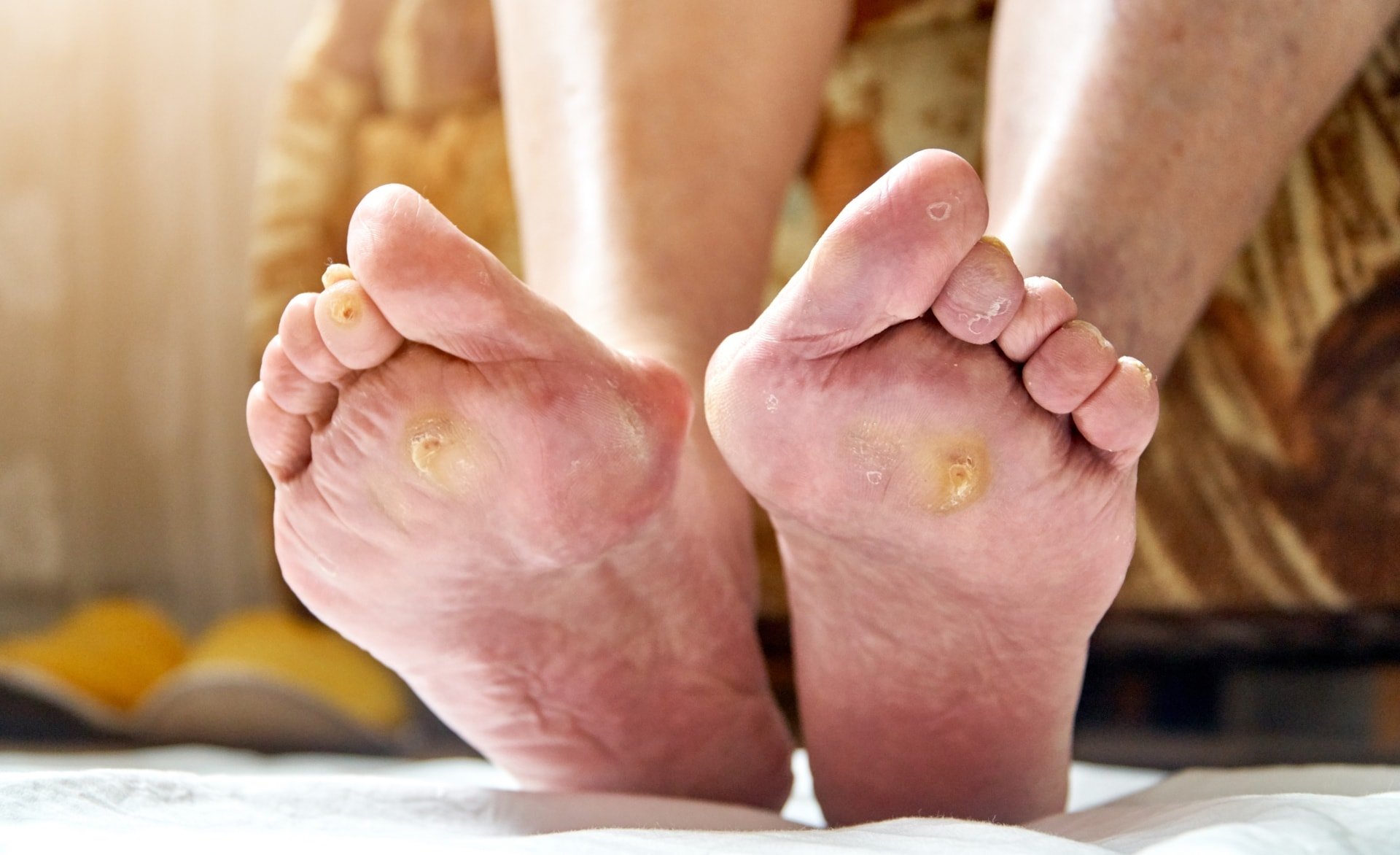The Toronto Dermatology Centre is one of the top places in Canada to manage diabetic skin and diabetic foot conditions. Our staff of outstanding Toronto dermatologists offer both a comprehensive assessment and diagnosis of your skin, and also discuss all the treatment and preventative options to optimize your foot care.

General Skin Care for the Diabetic Patient:
1. Humidity: In the winter, make sure that the humidity in your home is set to 40-50%. The winter air is dry, and heating our homes dries the air even further, so having your humidifier on and in working order is critical. Having a cool-air humidifier in your bedroom can be particularly helpful for diabetic skin since it puts moisture back into the air in an area where you spend 7+ hours per day.
2. Bathing Protocol: If you have true dirt or sweat on your body, then a soap is a good idea; consider a moisturizing soap (e.g. Dove, Petro-Phylic), rather than most soaps which are dehydrating. If you’re just taking a shower/bath simply for the sake of it, use a cleanser instead; cleansers are milder on the skin than a soap (e.g. Spectroderm). Adding a bath oil such as Oilatum can also be helpful and moisturizing for diabetic skin. Make sure your bath/shower is not scalding hot, and that after your shower, you pat dry your skin (rather than rubbing), followed by application of a moisturizer.
3. The “3 minute” rule to moisturization: After bathing/showering, it is imperative to apply your moisturizer within 3 minutes of exiting the water. This prevents evaporation of the water that was absorbed during your bathing which thus prevents drying out of the skin.
4. Moisturizer selection: In the winter months and on the feet and hands, a moisturizing cream or ointment is preferable. In the summer months or for body use, lotions can be considered. The thicker the moisturizer, the less evaporation of water from the skin occurs. Moisturizers containing Urea (e.g. Footlogix Cracked Heel Formula, Uremol-20) and ceramides (e.g. CeraVe, Impruv, Cetaphil Restoraderm) are particularly effective.
5. Check your feet for cracks, sores, or erosions: A crack of erosion on your heel or between your toes can be anything from simple dry skin cracking to fungal or bacterial infections. Make sure to see your doctor for this since any entry point for bacteria is potentially dangerous to a diabetic as a cellulitis or systemic infection can quickly develop. If you have any corns or calluses, speak to your physician about different treatment options or preventative things you can do. Proper foot care takes time and effort, but its well worth it.
6. Socks before underwear: In the morning and after bathing, make sure to put on your socks before putting on your underwear. This achieves two things. First, applying socks immediately after bathing (& after applying moisturizer), helps the moisturizer work better and prevent cracking of feet and heels. Second, many diabetic patients have fungus on their feet or in their toenails, so putting on underwear first will occasionally snag the toes and then the underwear will bring the fungus into the groin area resulting in “jock itch;” putting on socks first prevents this from happening.
7. Itchy skin: Diabetic skin is prone to dryness and to eczema (itchy, often red skin). If your skin is persistently itchy despite good bathing and moisturizing (as discussed above), its important to see your doctor for a prescription cream to stop the itching. Not only does scratching the skin damage the skin and make it look unsightly, but it can also result in cuts to the skin that are an entry point to infections.
8. The elements: Make sure to protect yourself from excessive sun or wind which can be damaging and dehydrating to the skin.
9. Breathable fabrics: Wearing cotton clothing and looser clothing allows the skin to breathe, and minimizes heat and humidity which can result in a breeding ground for bacteria and yeast.
10. Minimize or avoid alcohol, caffeine, and smoking: These “vices” are dehydrating to the skin and reduce immune system function. Make sure to eat a healthy diet with plenty of fruits and vegetables, and ample fluids throughout the day. Getting enough sleep is also important for the skin and the immune system.
11. Squeeze & lift: If you have leg swelling or lower leg discolouration (venous stasis dermatitis), it means you have circulation problems that many diabetics eventually develop. Its important when sitting, reading or watching TV to keep your legs elevated. As well, wearing compression socks or stockings (“below knee”) that are put on in the morning and taken off before sleep can be very beneficial. It is best to ask your physician about compression socks before you start wearing them. You’ll find that not only is there less swelling and discolouration of the skin of your legs, but also less soreness and heaviness to your legs.
12. Wounds, cuts, scratches: Diabetic skin doesn’t heal well or quickly, so it is critical that if you have a wound that you wash it gently and apply antibiotic ointment to it. If the wound is not healing, if you see pus or feel pain, or if you develop a fever, it is important to see your doctor immediately as you may be in need of oral or IV antibiotics to treat a possible infection.
Toronto Dermatology Centre is located in Toronto, Ontario, and serves men and women in North York, Vaughan, Richmond Hill, York, Aurora, Thornhill, Mississauga, Scarborough, Brampton, Etobicoke, Pickering, Peterborough, Guelph, Kitchener, Oakville, Barrie and all of Greater Toronto (GTA).
Thinking of visiting Toronto’s premier skin clinic soon?
Fill out the inquiry form below and let us know your area of interest.
Call us today @ 416.633.0001
